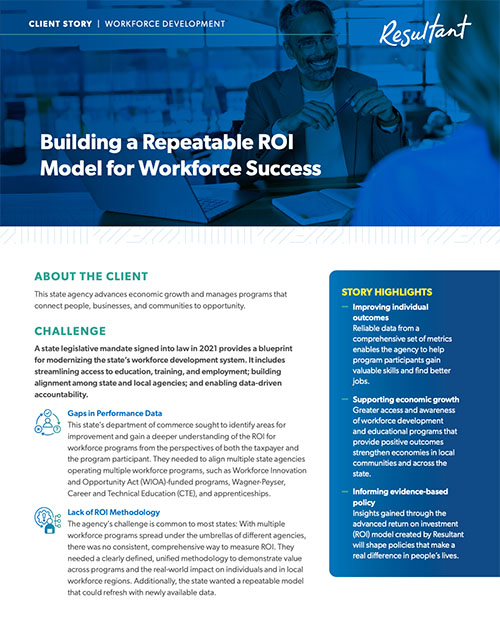Story Highlights
Challenge
Gaps in Performance Data
This state’s department of commerce sought to identify areas for improvement and gain a deeper understanding of the ROI for workforce programs from the perspectives of both the taxpayer and the program participant. They needed to align multiple state agencies operating multiple workforce programs, such as Workforce Innovation and Opportunity Act (WIOA)-funded programs, Wagner-Peyser, Career and Technical Education (CTE), and apprenticeships.
Lack of ROI Methodology
The agency’s challenge is common to most states: With multiple workforce programs spread under the umbrellas of different agencies, there was no consistent, comprehensive way to measure ROI. They needed a clearly defined, unified methodology to demonstrate value across programs and the real-world impact on individuals and in local workforce regions. Additionally, the state wanted a repeatable model that could refresh with newly available data.
Solutions



Results
Shared Vision for Better Outcomes
This project proves that ROI can be operationalized, even in complex environments and underscores the state’s commitment to improving citizen outcomes for workforce program participants. Helping the state make data-informed, proactive policy ensures that workforce programs will bring far-reaching benefits to those who seek them: uplifting families, strengthening communities, and driving long-term economic growth.
Data-Driven Program Optimization
With a sophisticated ROI methodology, the department of commerce can determine what programs worked well and where shortcomings exist. Initial outputs of the data model have already generated insights into how programs are performing. Stakeholders can then make strategic plans of action and target resources in a way that delivers the best possible results.
Future
Reach out to Resultant to learn how your state can adopt a similar ROI framework that is customized to your specific needs.



